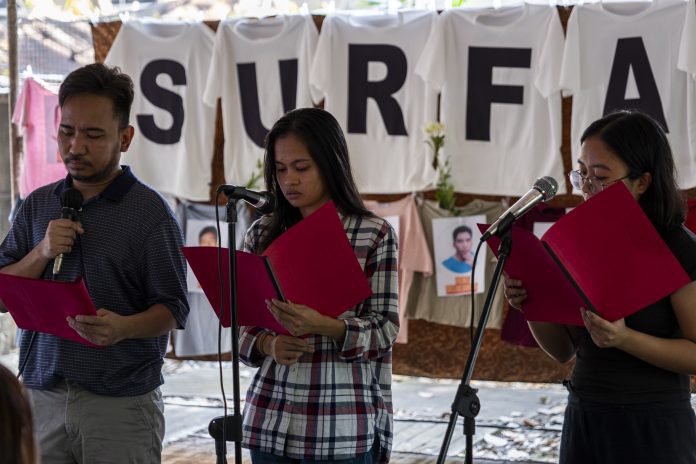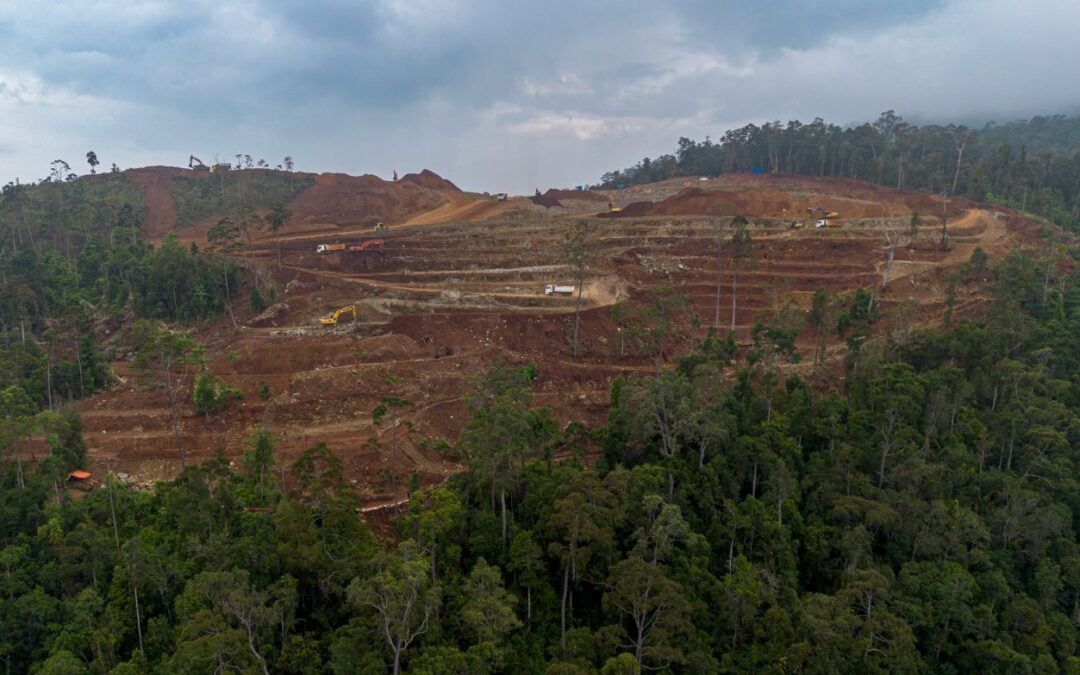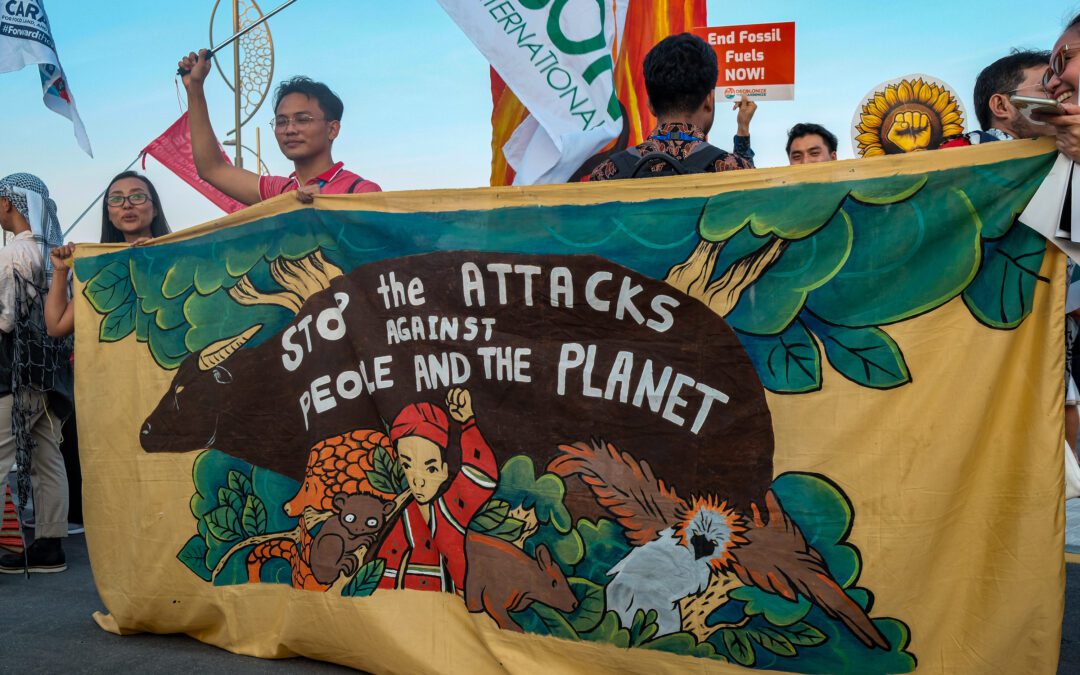The Philippines is the hardest-hit country in Asia by the frequency and greater intensity of typhoons indisputably caused by climate change. The World Meteorological Organization says the Philippines climate disasters have increased five times more intense in the past 50 years. What you read here is the truth, it is painful and self-inflicted pain by humankind but knowing the truth might set us free.
The heating of the oceans and rising sea levels all impact the Philippines. Roxas Boulevard will be underwater in 20 years. The mango and banana harvests have been badly affected with a decline in mango production by 4 percent, according to the Philippine Statistics Authority (PSA) in 2022.
The 27th Conference of the Parties (COP) of the UNFCC (United Nations Framework Convention on Climate Change) is ongoing in Sharm El Sheikh, Egypt until the 18th November 2022 and over 100 heads of state have attended.
For the past ten years, the rich countries have promised to reduce greenhouse gases, move away from fossil fuel and compensate the poor countries but most never did. In fact, CO2 emissions have increased, a record of shameful lies. Corporations have lied, too, by “green-washing” their CO2 polluting projects. Al Gore reveals at COP27 “. . . that the top 14 individual polluters are all gas and oil fields and their associated facilities, despite their emissions being “significantly under-reported” by 50 percent. Methane leaks and flaring was found to be three times more than what they reported to the UN. Methane is eighty times worse for the atmosphere than CO2.
In fact, all the oil companies lied again and again and still lie to the world and make billions of extra profits from selling the oil and gas at exaggerated prices upon which the world economy depends. The EU passed a law forcing them to pay an extra “windfall” tax.
The General Secretary of the UN, Antonio Guterres, said that the world is on the road to a fatal crash with its foot on the accelerator for not stopping the burning of fossil fuel. In fact, the world has increased its output of deadly CO2 by14 percent. Governments of rich nations continue to give financial subsidies to oil exploration companies.
“The fossil fuel industry is killing us,” Guterres said, “and leaders are out of step with their people, who are crying out for urgent climate action.”
This increase in emissions means that holding the global temperature below 1.5 degrees increase will not be possible. The planet has warmed continually for the past eight years and will continue to get hotter. We can expect more disastrous climatic events.
The climate crisis is getting worse, not better, and the planet is in convulsions. If you have doubts about it, consider the following. Thousands of experts and scientists report that 2022 is the worst year for climate disasters. The Philippines has had the worst series of super typhoons in living memory bringing floods and devastation.
Pakistan had a massive drought with 62 percent less rain and endured temperatures of 40 degrees centigrade. Then the non-stop rains came and 33 million people had to flee as one third of the country was under water. One thousand five hundred people died. China, the worst producer of CO2 in the world, had temperatures over 40 degrees as well that lasted for 70 days, followed by floods. Massive floods also devastated parts of South Korea with twice the average rainfall and the worst floods in 80 years.
India had temperatures as high as 49 degrees. Many died on the hottest days in 122 years since records began. There was 71 percent lower rain-fall and a drought. Huge wildfires raged in Europe with the worst drought in 500 years. Siberia and the United States also had their worst droughts in living memory. Australia lost 3.5 billion dollars due to massive floods. Somalia is suffering four years of devastating drought and thousands are enduring famine. Low-lying South Pacific Islands are going underwater.
Despite the call at COP 27 for trillions of dollars to be paid by way of justice for the damage caused by the rich countries to the poor, the rich give mostly promises but little money despite the fact that they are causing the climate crisis.
There is little chance that the Philippines will be compensated for the disasters and losses by the more intense typhoons. The Philippines is adding CO2 to the global warming from its present 28 coal-fired power generation plants. These supply 44.5 percent of the total energy supply since 2015. Twenty-two new plants are approved by the government but are on hold due to public outcry against them and the commitments of the Philippines to the Paris Agreement to reduce CO2 emissions.
There are just a few alternative renewable power generation projects supplying electric power. Renewable and totally free power sources are available in the Philippines — hydro power, solar panels, wind turbine, geo-thermal and biomass — that can replace oil and coal so the investors should focus on more renewable energy sources.
The UN Secretary General Guterres called for climate justice and said that the promises of the 2015 Paris agreement for rich developed nations to give US$100 Billion to the poor as compensation and to mitigate the disasters of climate change has not happened. “I emphasized the need to double (the) adaptation support to US$40 billion dollars a year by 2025,” Mr. Guterres said as was agreed in Glasgow COP26 last year. “Climate destruction is happening now. People are suffering now.”
What people everywhere can do is organize their communities to get everyone to start tree nurseries in their backyards and when the rainy season starts they have community planting in reserved areas or with the indigenous people. The Preda Foundation has records showing it planted (with the help of Aeta indigenous people of Zambales) a total of 49,150 mango saplings and other fruit trees on their ancestral lands since 2002 and many more planted before that date. Those trees absorb at least 8.3 tons of CO2 every year. Anyone can join this ongoing project.
The indigenous people are lovers of nature and the forest. They are living in harmony with what is left of it. They were the hunters and gatherers before the political logging families cut down the rainforests, exported raw logs and sold them to rebuild Europe and Japan. The powerful families then claimed ownership of the denuded ancestral lands of indigenous people and planted 3.2 million hectares with 325 million coconut trees which makes them incredibly rich and powerful enough to rule the Philippines.
The destruction of the Philippine rainforests is a crime against the indigenous people but also against a stable climate for the Filipino people. Greater harm is coming to the Philippines as the planet grows warmer and temperatures increase and rural areas become poorer for millions of small tenant farmers. The Philippines must phase out coal plants and go for renewable sources of power.
Irish missionary Father Shay Cullen, SSC, established the Preda Foundation in Olongapo City in the Philippines in 1974 to promote human rights and the rights of children, especially victims of sex abuse. The views expressed in this article are those of the author and do not necessarily reflect the official editorial position of OeconoMedia.
TO SUPPORT THE WORK OF PREDA FOUNDATION, contact them directly through email: shaycullen@gmail.com or predainfo@gmail.com






0 Comments